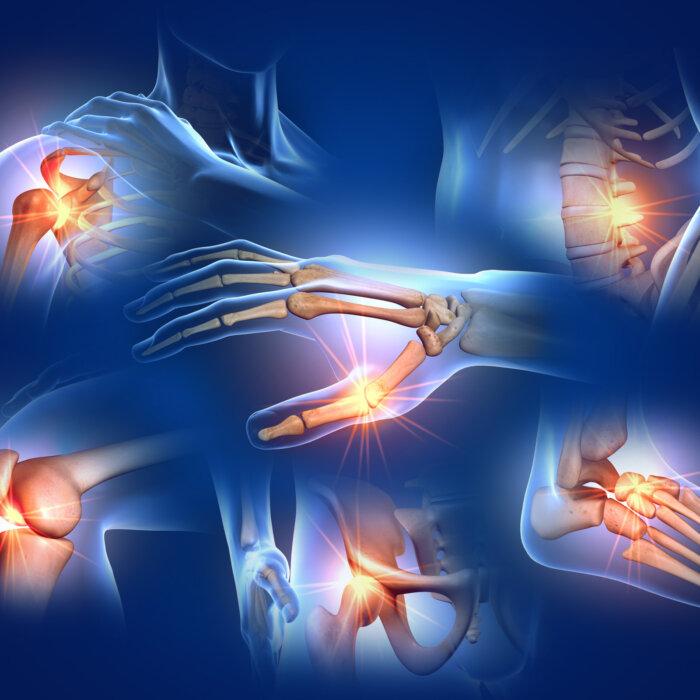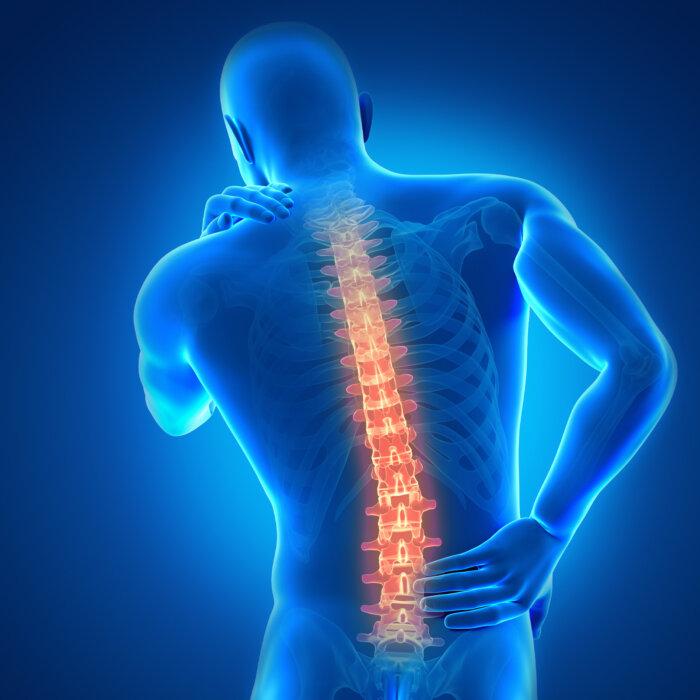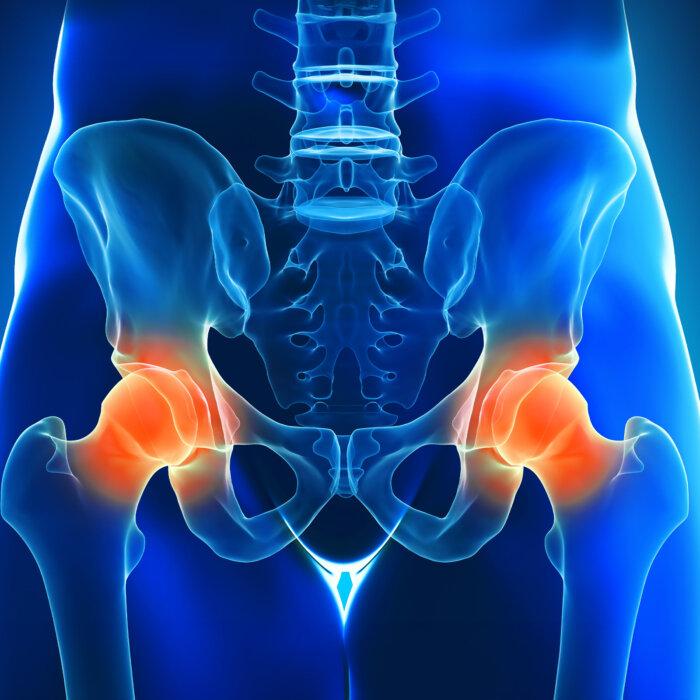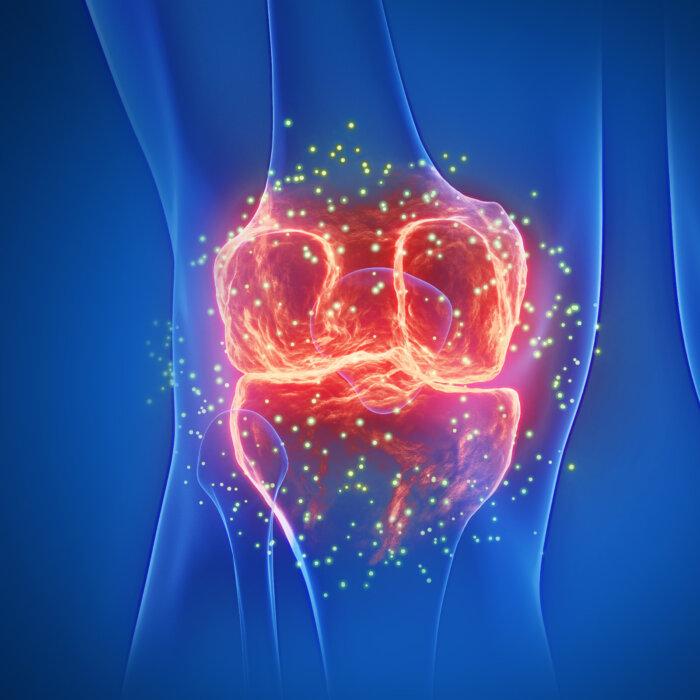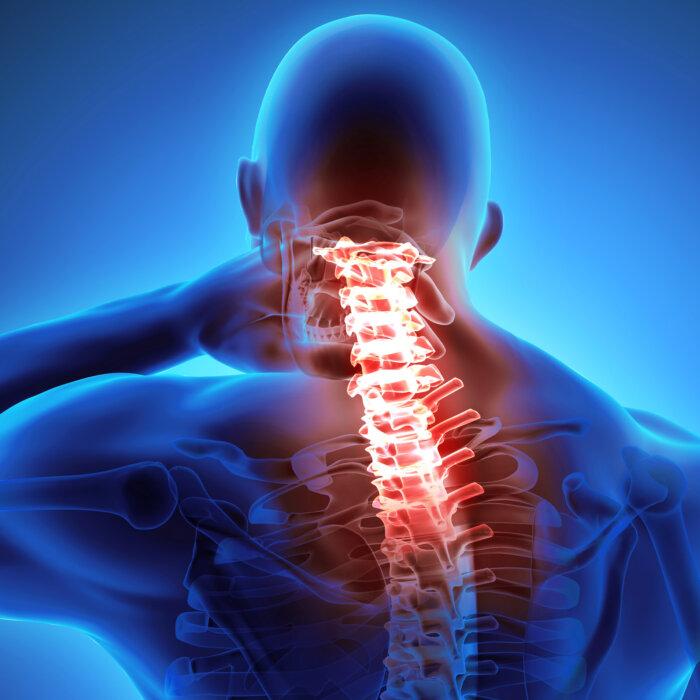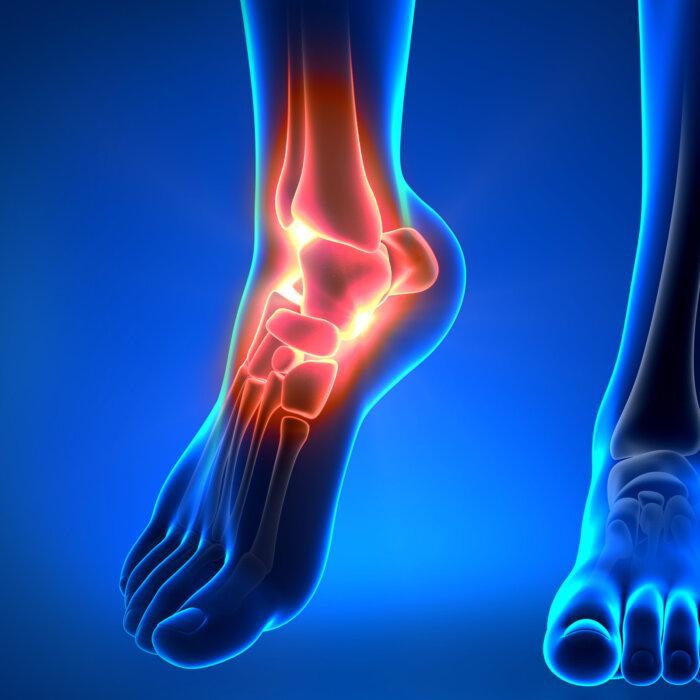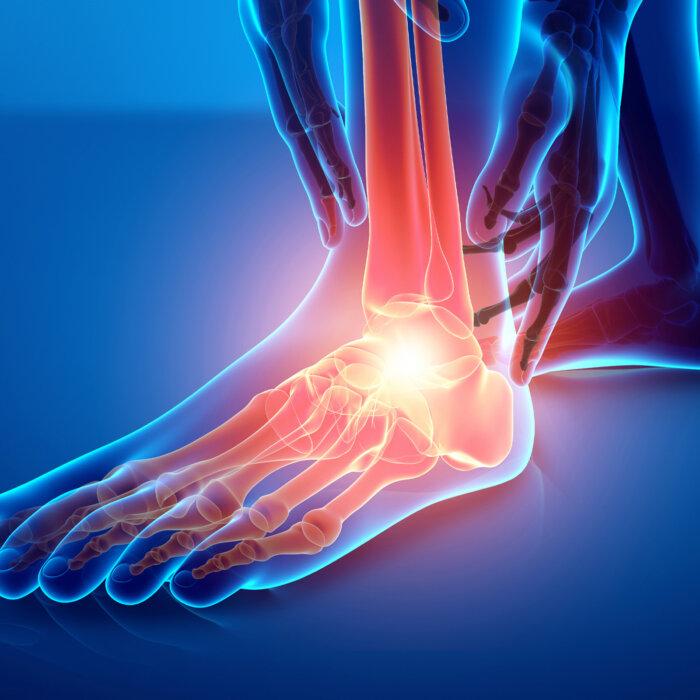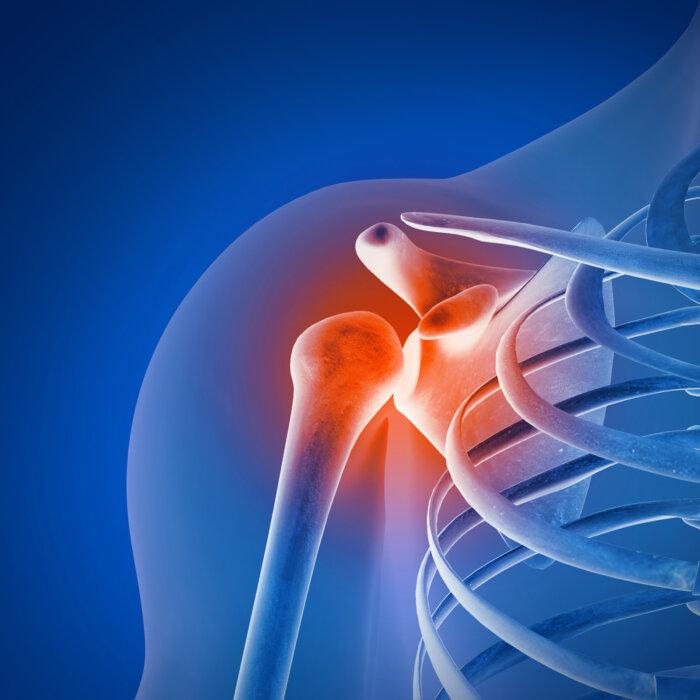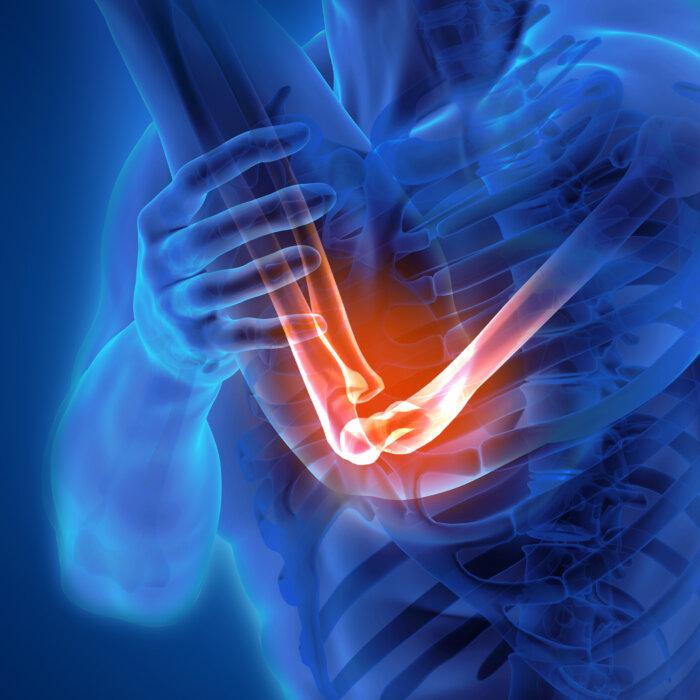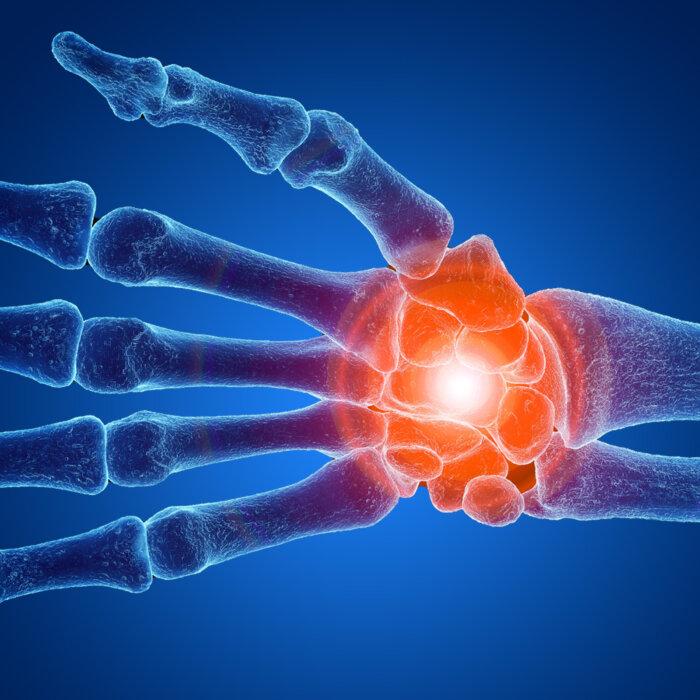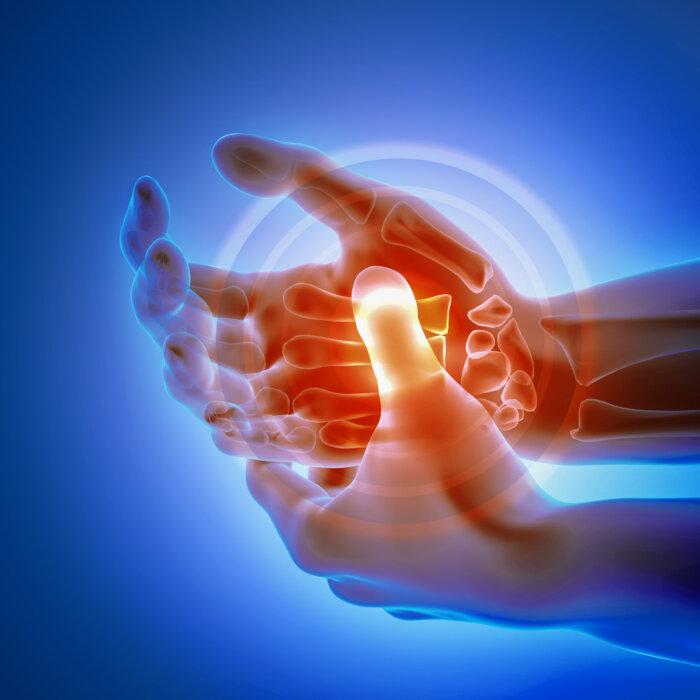The Bones of the Foot
The 26 bones of the foot fall into three groups: the tarsals, metatarsals, and phalanges.Tarsal Bones
These bones connect the ankle and foot and allow the foot to articulate with the ankle while walking, running, and negotiating uneven terrain. A bone articulation is a joint of two bones. The ankle articulation allows for a variety of movements.Metatarsal Bones
This group of five tubular bones in the middle of the foot connects the tarsal bones and the phalanges and adds structure and strength to the foot.Phalanges
These are the small bones in the toes, which are similar to the bones in the fingers. The big toe has two phalanges, while the rest of the toes have three.The Muscles of the Foot
Strong foot muscles are essential for mobility and good balance. The muscles that coordinate foot movements fall into two major groups, known as the extrinsic and intrinsic muscles.The Extrinsic Muscles
The extrinsic muscles originate in the lower leg and allow for gross motor movements of the foot, such as walking, by stabilizing the ankle during movement. The extrinsic muscles include the plantar flexors and dorsiflexors.Plantar flexion is the bending of the ankle to point the foot down, such as when standing on your toes to reach for something high, pressing down on the gas pedal while driving, or going “en pointe” while ballet dancing.
The plantar flexor muscles work in conjunction with the hamstring muscles of the upper leg during walking and running.
Foot dorsiflexors allow the foot to flex foot in the “dorsal,” or upward, direction—bringing the foot back toward the shin.
Full ankle dorsiflexion is essential for maintaining good posture and for movements such as walking, running, jumping, and squatting.
The Intrinsic Muscles
These muscles are located inside the foot itself and are responsible for more fine motor movements such as stabilization of the foot and flexion and extension of the toes, and they provide strength to the foot arches.Common Causes of Chronic Foot Pain
Specific medical conditions, such as diabetes, are closely associated with foot pain, but Ms. Balasubramaniyan explained that functional patterns and muscle weakness are the primary causes of foot pain in healthy feet.Functional Patterns
Our feet can experience considerable compressive and twisting forces during movement, and overuse can provoke pain. Walking on uneven surfaces with weak foot muscles and tendons can be another cause. The feet must constantly adapt to the environment, which is harder to do when weakness exists.Muscle weakness
Foot pain can also originate from muscle weakness. A sedentary lifestyle will allow foot muscles and tendons to weaken, potentially leading to painful foot issues. For example, weak plantar flexor muscles can lose their ability to support the ankles and feet during walking and running, leading to painful alignment imbalances.Exercises for Chronic Foot Pain
Ms. Balasubramaniyan highly recommends bodyweight exercises for strengthening since they are safe, effective, and easy to perform, allowing for a great workout without any equipment.Sitting Alphabet
The sitting alphabet exercise is a fantastic way to engage the tendons, ligaments, and muscles of the foot and ankle.The ankle alphabet provides a great warmup before other exercises.

Complete the alphabet once per set and try two sets. For fun, you can do uppercase and lowercase letters, and can also try writing in cursive for an extra challenge.
Resist trying to use your leg to do all of the movements; instead, try using only your foot for as much of the movement as possible. Don’t bounce or rush the movements; take approximately three seconds to write each letter. Try to be accurate with the letters and point your toes during the exercise.
Ms. Balasubramaniyan recommends performing this exercise with careful, exacting movements.
Standing Calf Raise
The standing calf raise focuses on the plantar flexors on the back of the calf, especially on the gastrocnemius and soleus muscles, which are critical for pushing through the end of leg travel during walking and running.
Complete 10 to 30 repetitions per set, and try doing two sets.
Be sure not to bounce or rush the movements. Pay attention to your body, and don’t push into pain or discomfort. Keep your stomach and other core muscles tight during this exercise, and stand as upright as possible.
Seated Toe Raises
Seated toe raises focus on the often neglected dorsiflexor muscles in the front of the leg, especially the tibialis anterior muscles, which allow you to raise your foot during walking and running.
Complete 10 to 30 repetitions per set, and try to do two sets.
Don’t bounce or rush the movements. Take one second to move in either direction, and be sure you lift your toes all the way up to get the best workout.
You can make this exercise more challenging by resting the heel of one foot on the toes of the foot being exercised.
Single-Leg Towel Stance
Instead of targeting a specific muscle, this advanced exercise very effectively targets every structure in the ankle-foot complex, including the toes.
Perform three times with each leg.
Keep your hands close to the stabilizing surface at all times for safety.
Towel Slides
This exercise focuses heavily on the small foot muscles but also works the ankle muscles.
The towel will bunch up as you go, but this is expected.
This exercise can be performed on either carpets or floors, but keep in mind that performing the exercise on a carpeted surface will make the exercise harder to perform.
If you do these exercises at least three times a week, your feet will thank you. Strengthening your foot and ankle muscles and tendons can go a long way in helping to ease existing pain while protecting you from future problems.



